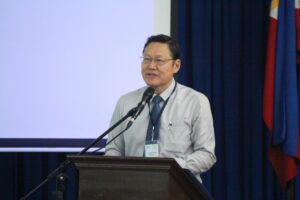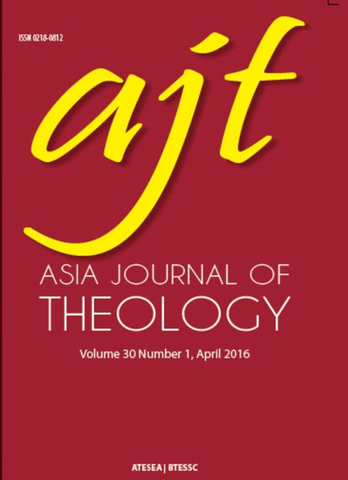Collaboration in Theological Education
“Collaboration.”
This is the word that reverberated repeatedly in the sessions of the programs conducted by ATESEA.
Cambridge dictionary defines collaboration as “the situation of two or more people working together to create or achieve the same thing.” Collaboration is not a new word, but it has power. Depending on the context and purpose, it has many wrappings and trimmings that carry either positive or negative connotations.
In the business world, collaboration is understood as a strategy used to cushion and save the company from the impact of competition. Efforts are calculated, if not measured, in order to avoid losses of time, money and resources. In theological education, the idea of collaboration comes out from an awareness of the broad range of opportunities and needs which are commonly shared by all. Rich resources may be available. However, they may not be strategically accessible to others.
At the Conference for Librarians, the participants recognized that in order to “assure quality theological education” they should work together to overcome the limited resources that many seminaries in Asia hurdle due to financial constraints. A similar sentiment was expressed by the participants in the recent Teachers’ Academy for lecturers in History of Christianity. The delegates acknowledged that Asia has a lot of untapped resources that could cultivate scholarship among the budding church historians. For this reason, they encouraged each other to organize collaborative research and publication in addition to sharing of teaching and learning resources in the area of History of Christianity.
Obviously, other theological disciplines can resonate with the above observations. The inequity of resources and opportunities are critical issues. They can curb the positive outcomes of collaborative ventures among the schools if their purpose and implementation are not carefully defined and properly made known. Therefore, crucial for theological education is how to optimize the potential benefits that the theological schools can draw from collaborating with each other. Collaboration can serve as a leverage to open access to resources that are not available to many. It can foster cooperation and debunk the view that only those who can afford have the monopoly of all resources.
Certainly, there is no such thing as a free ride to any collaborative initiative. Rather, the dynamics of collaboration operate within the context of shared visions and goals. As such, there is a high level of accountability that is expected of any collaborative engagement. Without that element in view, collaboration can be a trap to dependency, if not the cause for self-pride, thus defeating the real intent for collaborating.
To avoid that pitfall, the librarians at the ATESEA conference thought that those who are involved in this process of collaboration should have a clear understanding of what they want to achieve and hope to contribute for the interest of all. Collaboration pursues to level off the unevenness of the economic conditions of schools in Asia in order to develop faculty and research; thus, eventually enhancing student learning. This means that each participating school should identify its strength and influence that are mutually beneficial to all.
ATESEA takes pride in its member schools’ spirit of collegiality and openness to serve and think beyond themselves. Such an attitude builds an atmosphere of trust among the theological educators which contributes to the overall enrichment of theological education. ATESEA has committed itself to provide the space for interactions among the theological schools for the enhancement of knowledge and skills of the participants to its various conferences and seminars. It continues to offer them the opportunity to broaden their networks for professional development, thus allaying the threat of competitions.
With all these undertakings, ATESEA hopes to create a synergy for a more dynamic collaborative engagement among the seminaries in preparing competent men and women for ministerial leadership. Such aspiration puts the idea of collaboration as central and fundamental in the agenda of theological education in the context of an economically and politically challenging environment.
– by Dr. Limuel Equina
Executive Director, ATESEA












